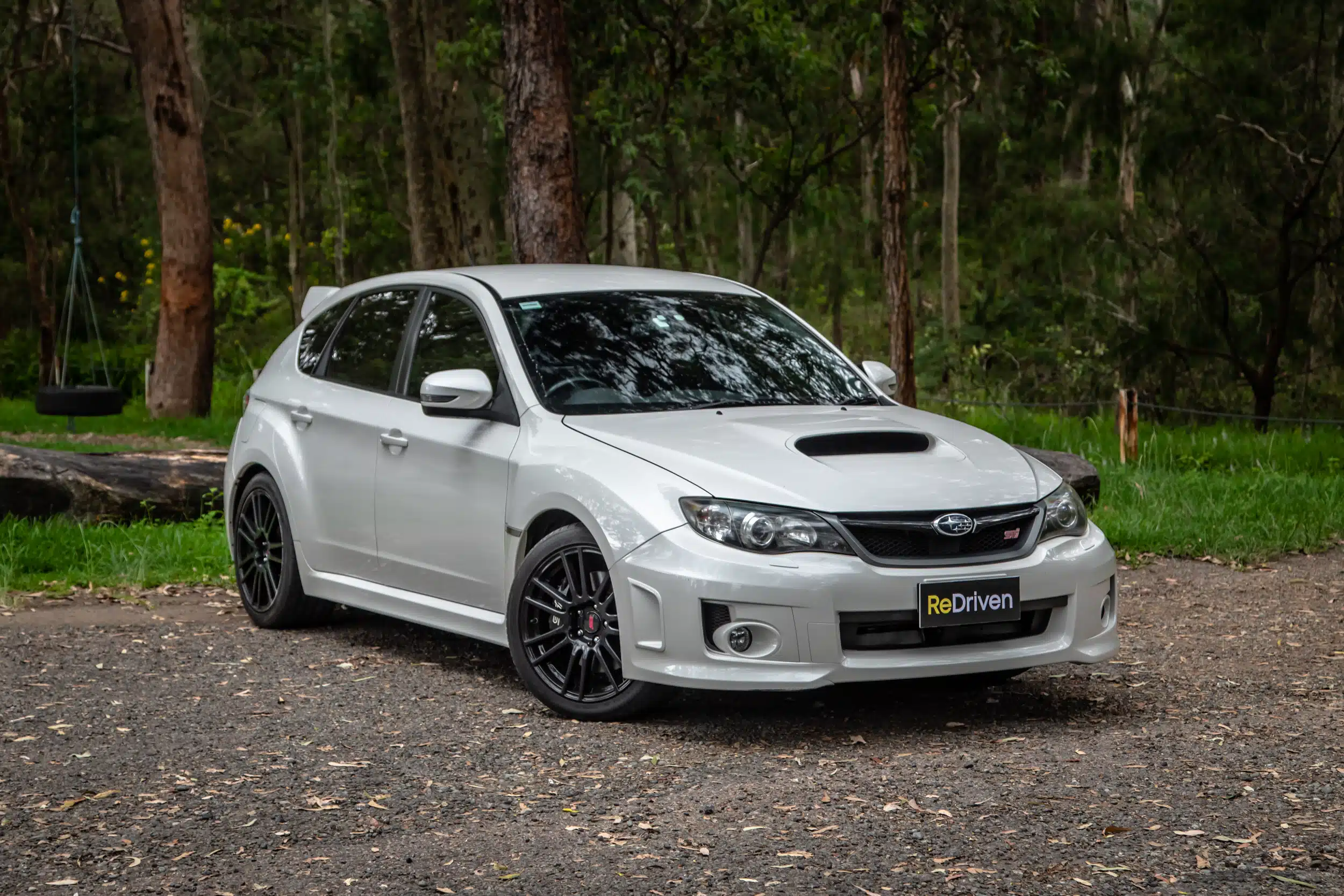For decades, Subaru has cultivated a unique position in the automotive landscape—neither mainstream luxury nor budget econobox, but something distinctly its own. It’s a brand that’s won loyalty not by flash or frills, but by showing up for drivers in ways that matter: through blizzards, down logging roads, across mountains, and during everyday commutes that demand reliability.
With its symmetrical all-wheel drive system, horizontally opposed boxer engines, and a rugged, outdoorsy aesthetic, Subaru has become the go-to vehicle for hikers, skiers, dog owners, and anyone who sees the open road as an invitation to explore. It’s not just about owning a car—it’s about trusting it to get you where you’re going, no matter the season or the terrain.
But as beloved as the brand is, Subaru has its share of skeletons in the garage. For every Crosstrek that conquers 200,000 miles of mountain trails, a Forester is burning a quart of oil every thousand miles. For every Legacy that offers smooth, comfortable rides through snow-packed highways, there’s an Impreza that leaves oil spots in your driveway like breadcrumbs.
While Subaru has rightfully earned accolades for safety, traction, and longevity, it has also earned criticism for certain mechanical flaws, most notably with oil leaks and consumption problems that have plagued several engine generations.
This duality is what makes Subaru so fascinating. Some models are nearly bulletproof, whose engines run like clockwork even after a decade of daily abuse, and then some models require owners to constantly monitor oil levels, anticipate head gasket failures, or accept ongoing repairs as part of the ownership experience. And this isn’t a matter of isolated cases—entire model years, and sometimes entire engine families, have been known to fall on either side of that divide.
In this article, we’re breaking down the Subaru spectrum into two key categories. First, we’ll explore five Subaru models that truly handle everything. These are the vehicles that earn Subaru its reputation—the cars that keep going, keep climbing, and keep impressing well past 100,000 miles. They represent the best of the brand: reliable drivetrains, durable builds, and a go-anywhere, do-anything spirit. They’re not just cars; they’re loyal companions.
Then, we’ll shift gears to look at five Subaru models that leak oil nonstop. These are the frustrating, sometimes infuriating reminders that no automaker is perfect. Often equipped with flawed engine designs or problematic gaskets, these Subarus have driven owners to keep quart jugs in the trunk, develop a sixth sense for low-oil warnings, and spend more time at repair shops than they bargained for. They’re the cautionary tales that prove even the most beloved brands have blind spots.
Whether you’re a lifelong Subaru owner, a prospective buyer, or simply curious about the realities behind the reputation, this guide will help you separate the Subarus that stand the test of time from the ones that leave you stranded—or at least leaking. Let’s take a closer look at the models that live up to the legacy and those that challenge it.
Also Read: 5 Cars That Sell Fast on Facebook Marketplace and 5 That Stay Listed for Months
Table of Contents
Toggle5 Subarus That Handle Everything

1. Subaru Outback (2010–2014, 3.6R Trim)
The 2010–2014 Subaru Outback 3.6R remains one of Subaru’s most well-rounded vehicles—a versatile blend of refined comfort, capable engineering, and long-term durability. While most Outbacks of this era used the fuel-efficient but problematic 2.5L four-cylinder engine, the 3.6R offered something far more robust: a smooth and powerful 3.6-liter flat-six engine paired with a five-speed automatic transmission.
This drivetrain gave the Outback the muscle it needed to tow, climb steep grades, and accelerate confidently, all while avoiding the chronic oil consumption issues of the 2.5i. The six-cylinder engine proved itself reliable over time, often surpassing 200,000 miles with minimal repairs when properly maintained.
From a performance and usability standpoint, the 3.6R was purpose-built for the adventurous. It featured Subaru’s symmetrical all-wheel drive and nearly 9 inches of ground clearance, making it well-suited for unpaved forest roads, snowy highways, and mountain switchbacks. Whether navigating rural terrain or icy city streets, the Outback 3.6R instilled confidence.
The suspension absorbed rough patches with grace, and the higher stance gave drivers the vantage point of an SUV while maintaining the lower center of gravity typical of a wagon. This combination made it a rare beast—capable off-road, yet composed and comfortable on the pavement.
Inside, the 3.6R struck a balance between practicality and upscale features. Heated leather seats, dual-zone climate control, and available navigation made long drives more comfortable. It also offered exceptional cargo space and flexible seating arrangements, reinforcing its identity as the perfect road-trip or family adventure vehicle.
While not flashy or luxurious in the traditional sense, the Outback 3.6R was beloved for its substance—an honest, hardworking car that earned its keep mile after mile, through all seasons and all terrains.

2. Subaru Forester (2016–2018, 2.5i Premium)
The 2016–2018 Subaru Forester 2.5i Premium represents the point where ruggedness meets refinement. Subaru addressed many of the engine reliability issues from earlier generations, especially the oil consumption problems tied to the 2.5-liter engine.
Thanks to redesigned piston rings and improved engine tuning, the FA-series engine in this Forester performs smoothly and burns noticeably less oil, giving drivers much-needed peace of mind. This model also benefited from enhanced structural rigidity and sound deadening, resulting in a quieter, more composed ride that made it a viable daily driver as well as an adventure companion.
The Forester’s tall stance and class-leading visibility made it one of the most practical crossovers in its segment. Its symmetrical all-wheel drive provided a surefooted feel in rain, snow, or on gravel, and with 8.7 inches of ground clearance, it could easily manage trailheads or deep snowbanks where front-wheel drive crossovers might falter.
Subaru’s X-Mode enhances low-speed traction, making it especially capable on slippery inclines and uneven terrain. Even though it was never marketed as an off-roader, this generation of Forester tackled dirt trails and unpaved mountain roads with surprising competence.
Inside, the 2.5i Premium trim offered an ideal mix of comfort and functionality. The large windows, upright seating position, and minimal blind spots made driving easy and confidence-inspiring. Cargo space was generous, and the rear seats folded flat to accommodate larger gear—tents, bikes, even kayaks.
Features like the panoramic sunroof, heated seats, and available EyeSight safety suite elevated its appeal among families and solo adventurers alike. For drivers seeking a dependable, no-fuss vehicle that could take on the elements and still look good in the city, the Forester from this era was a true gem.
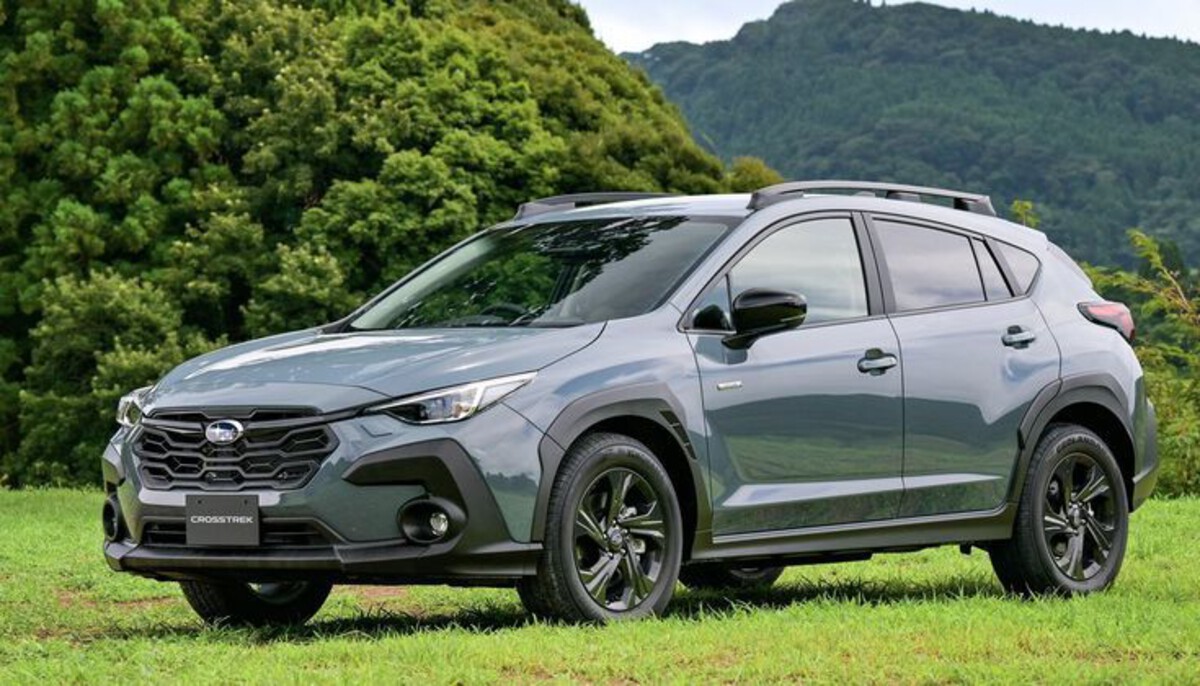
3. Subaru Crosstrek (2018–2020)
The 2018–2020 Subaru Crosstrek marked a turning point in Subaru’s compact crossover lineup. Built on the new Subaru Global Platform, it delivered noticeably improved ride quality, structural stiffness, and crash protection. This generation wasn’t just better engineered—it also addressed many of the mechanical issues that had plagued earlier models.
The 2.0-liter four-cylinder engine was tuned for better reliability, oil consumption was drastically reduced, and drivetrain smoothness was enhanced thanks to software updates and transmission recalibrations. While it didn’t offer sports car acceleration, it provided rock-solid reliability and excellent fuel economy, both prized by the Crosstrek’s target audience.
Where the Crosstrek really shines is in its balance between urban maneuverability and outdoor readiness. With a compact footprint, it’s easy to park and navigate through tight city streets. But once you leave the pavement, its 8.7 inches of ground clearance, symmetrical AWD, and standard X-Mode traction system come into play.
The Crosstrek handles gravel roads, snow-covered trails, and light off-roading with surprising grace. It’s the perfect vehicle for someone who wants a car that’s just as happy commuting to work as it is exploring a national park on the weekend.
On the inside, the Crosstrek is practical and inviting. With wide-opening doors, durable seat materials, and smart storage spaces, it’s ready for muddy boots, backpacks, and four-legged companions. The infotainment system is straightforward, Apple CarPlay and Android Auto come standard, and the safety suite provides additional peace of mind.
For students, young professionals, or couples looking for an all-weather adventure companion, few vehicles hit the mark as squarely as this generation of Crosstrek. It’s proof that capable doesn’t need to be large or loud—it just needs to be well-built and thoughtfully designed.

4. Subaru WRX STI (2011–2014)
The 2011–2014 Subaru WRX STI is the rare vehicle that delivers track-worthy thrills while still handling poor weather and rough roads with composure. Its 2.5-liter turbocharged EJ257 engine is an old-school flat-four powerhouse that, when left in stock form and properly maintained, proves remarkably durable.
Unlike the standard WRX of the same era, which had reliability issues due to weaker internal components and ringland failures, the STI was designed for performance under pressure. With forged internals, a robust 6-speed manual transmission, and an advanced all-wheel-drive system with a driver-controlled center differential, it’s a car that thrives when the conditions are anything but ideal.
While many performance cars are limited by their drivetrains in snow or rain, the STI excels. It grips, claws, and carves through all four seasons. Snow-covered back roads, winding tarmac, or gravel switchbacks—the STI can handle it all with a degree of confidence unmatched by front- or rear-wheel-drive rivals.
Its suspension, while firm, is well-tuned for spirited driving and capable enough to absorb imperfections on poorly maintained roads. Whether you’re blasting down a canyon road or escaping a surprise snowstorm, the STI feels ready to push forward without hesitation.
Beyond performance, the STI has a surprising amount of practicality. With a four-door layout and usable rear seats, it’s not just a weekend toy—it’s a daily driver for enthusiasts. It offers trunk space, reliability (when not over-modified), and a personality that turns every commute into a miniature rally stage. While newer STIs have since moved to different platforms, the 2011–2014 generation remains a favorite for its mechanical simplicity, raw feedback, and proven track record for enduring both speed and seasons.
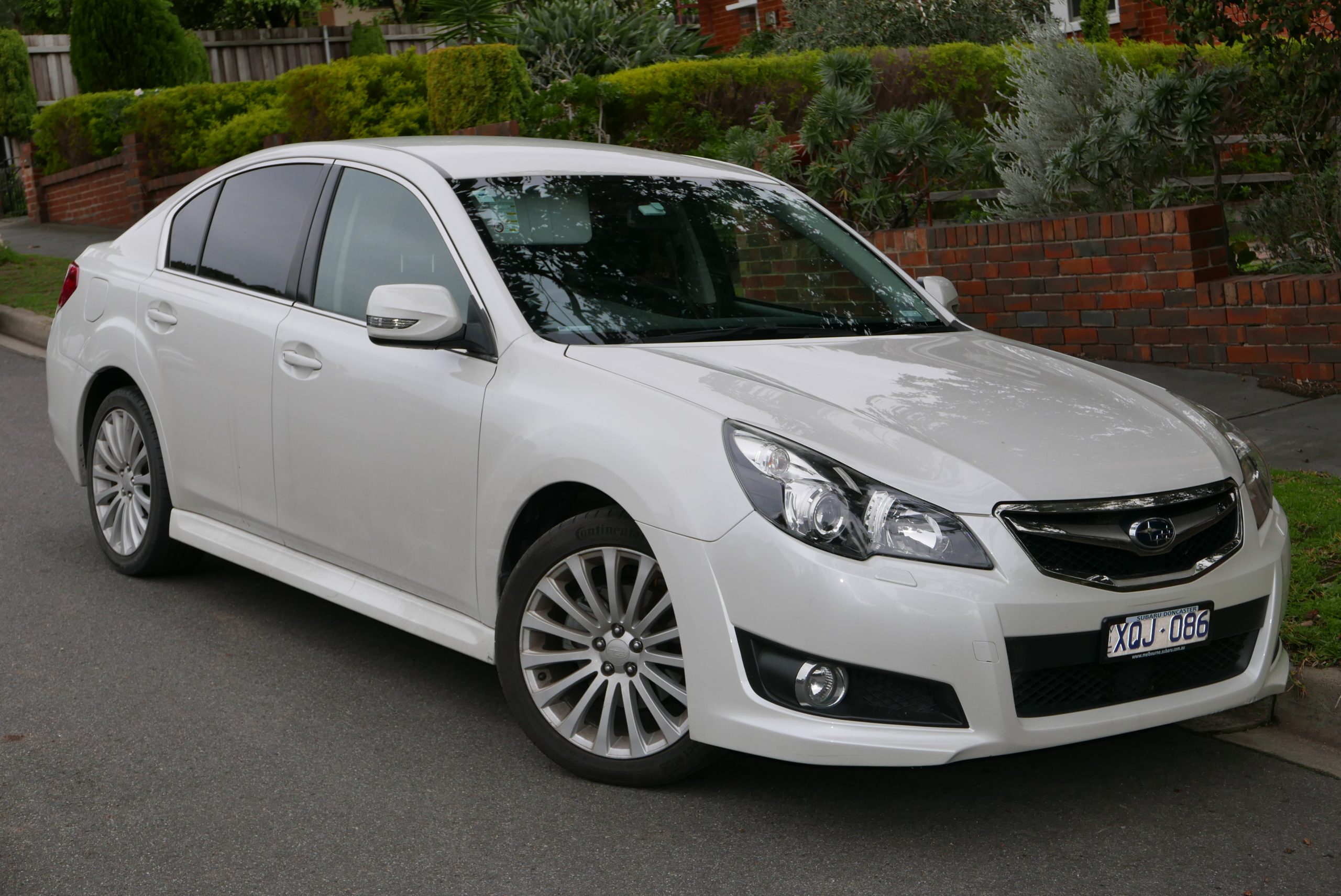
5. Subaru Legacy (2015–2019, 2.5i Limited)
The 2015–2019 Subaru Legacy 2.5i Limited is one of the most underrated all-weather sedans on the market. Often overshadowed by flashier competitors, this mid-size sedan quietly delivers a near-ideal blend of comfort, capability, and long-term reliability. Built on a more refined chassis and equipped with a re-engineered 2.5-liter engine, this generation of Legacy corrected many of Subaru’s past issues with oil consumption and mechanical noise. It offered a smooth and quiet ride, making it ideal for highway driving and daily commuting alike.
The Legacy may not shout “rugged,” but with standard symmetrical all-wheel drive and a smart traction control system, it handles snow, slush, and heavy rain as confidently as any crossover. For those who want sedan dynamics without sacrificing winter performance, the Legacy is a standout.
It’s composed on icy roads, predictable in emergency maneuvers, and inspires confidence even when conditions are sketchy. Thanks to improved CVT tuning and a quiet cabin, it delivers one of the most pleasant Subaru driving experiences to date, especially for those who don’t want a high-riding SUV.
Inside, the Legacy 2.5i Limited shines with upscale touches like leather upholstery, heated front and rear seats, a Harman Kardon audio system, and Subaru’s EyeSight driver assistance features. The seating is comfortable for long trips, rear passenger space is generous, and the trunk is ample for daily needs or weekend travel.
This Legacy proves that “handling everything” doesn’t have to mean going off-road—it can also mean enduring snowy commutes, hauling family gear, and doing so with class and comfort for well over 150,000 miles.
5 Subarus That Leak Oil Nonstop
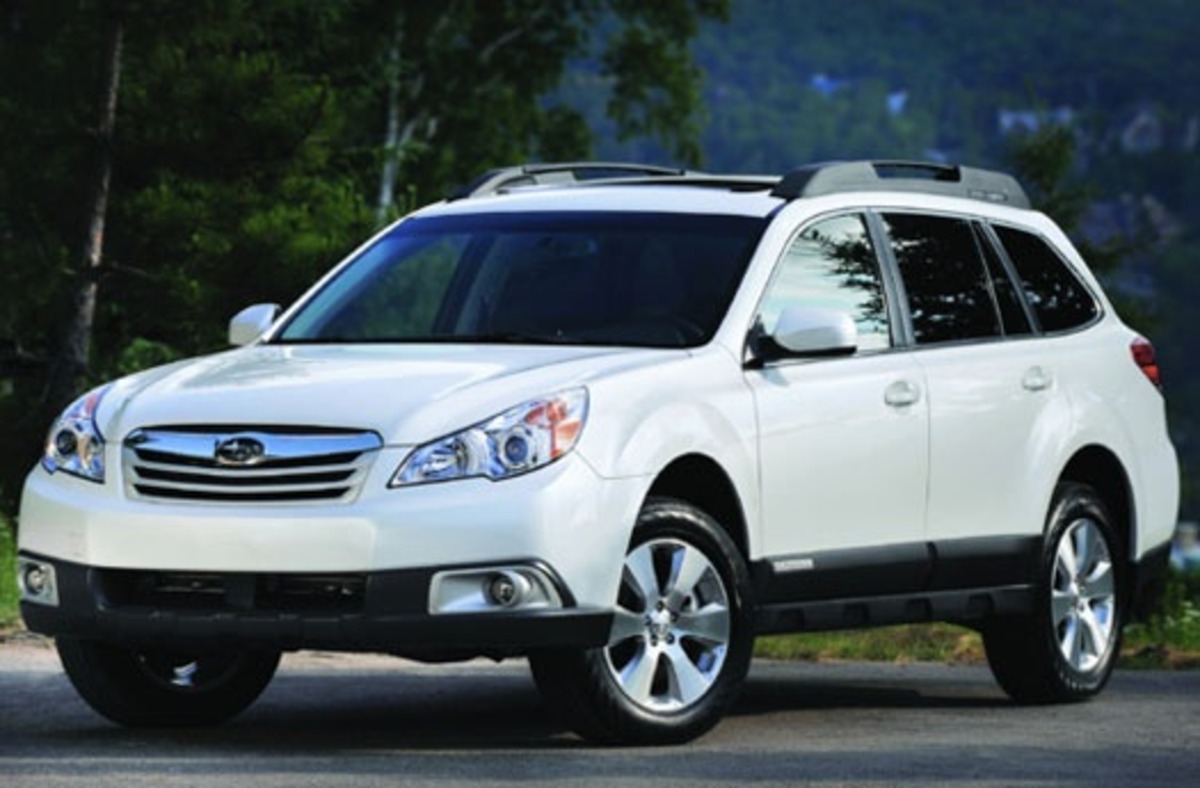
1. Subaru Outback (2010–2014, 2.5i)
The 2010–2014 Subaru Outback with the 2.5i engine is one of the most notorious Subarus when it comes to oil consumption and leaks. At first glance, this generation appears to be a solid option, offering spacious interiors, strong safety ratings, and capable all-wheel-drive traction.
But under the hood lies the infamous naturally aspirated 2.5-liter boxer engine that plagued countless owners. This engine suffered from defective piston rings that allowed engine oil to seep into the combustion chamber, where it was burned off. The result? Substantial oil loss between changes—sometimes as much as a quart every 800 to 1,000 miles.
The issue wasn’t just mechanical—it was systemic. Subaru, for a time, considered this level of oil consumption to be “within normal specifications,” leaving many owners feeling ignored and unsupported. The company eventually faced a class-action lawsuit and extended warranties on some affected vehicles, but only after thousands of consumers had paid out-of-pocket for oil refills, monitoring systems, and in some cases, full engine rebuilds.
Many dealerships only addressed the issue after owners performed an oil consumption test—a process that often delayed resolution by several months. By then, frustration had set in.
Adding insult to injury were the frequent physical oil leaks from valve cover gaskets, timing chain covers, and oil pan seals. The horizontal layout of the boxer engine meant that oil seeped out sideways, often burning on the hot exhaust manifold and creating smoke or a strong oil odor.
For drivers expecting long-term reliability from their Subaru, this generation of Outback 2.5i felt like a betrayal. While the vehicle remained structurally solid and capable on the road, the engine’s constant thirst for oil turned many owners away from the brand altogether.
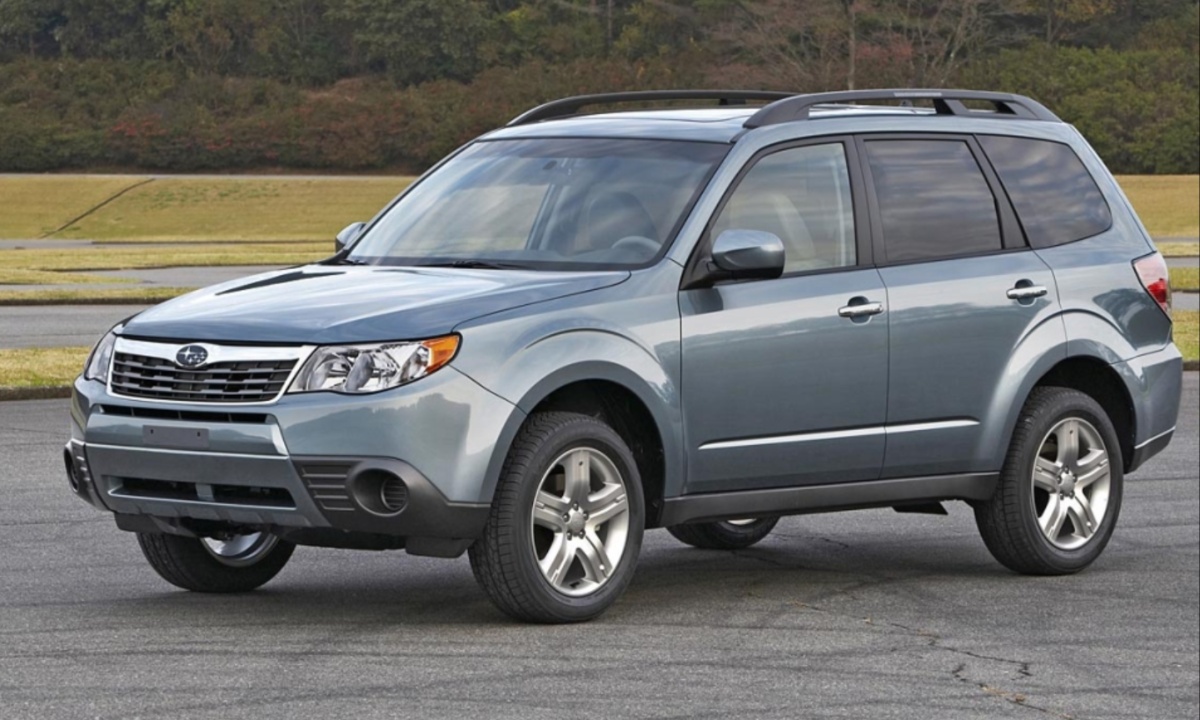
2. Subaru Forester (2009–2013, 2.5i)
The 2009–2013 Subaru Forester shares the same problematic 2.5-liter boxer engine as its Outback sibling—and suffers many of the same headaches. In theory, the Forester is the ideal compact SUV: simple, safe, fuel-efficient, and great in poor weather.
But in reality, this generation’s chronic oil consumption turned what should have been an affordable, practical car into a constant maintenance project. Owners frequently reported needing to carry oil in the trunk and check dipsticks weekly, especially in colder climates where oil burning seemed to intensify.
The source of the problem once again centered around poorly seated piston rings and an outdated engine design that Subaru had failed to modernize despite knowing the risks. Adding to the challenge, the boxer engine’s layout made oil leaks harder to diagnose and fix.
Leaks were commonly found in the valve cover gaskets, head gaskets, and rear main seal, each requiring extensive labor to repair due to the engine’s flat configuration. As a result, even minor repairs could cost thousands of dollars, especially for out-of-warranty vehicles. This was particularly frustrating for budget-conscious drivers who had chosen Subaru expecting low maintenance costs and long-term value.
Compounding matters was Subaru’s slow and often dismissive customer service response during the peak of these issues. Many Forester owners reported that dealerships minimized the concern or deflected blame onto driving habits, rather than acknowledging a widespread engine defect.
Even after lawsuits and public scrutiny, resolution was inconsistent. Some got engine replacements; others were left with bills and engines that continued to burn oil for the life of the car. The Forester’s strong bones couldn’t overcome the poor engine design, turning an otherwise excellent car into a cautionary tale.
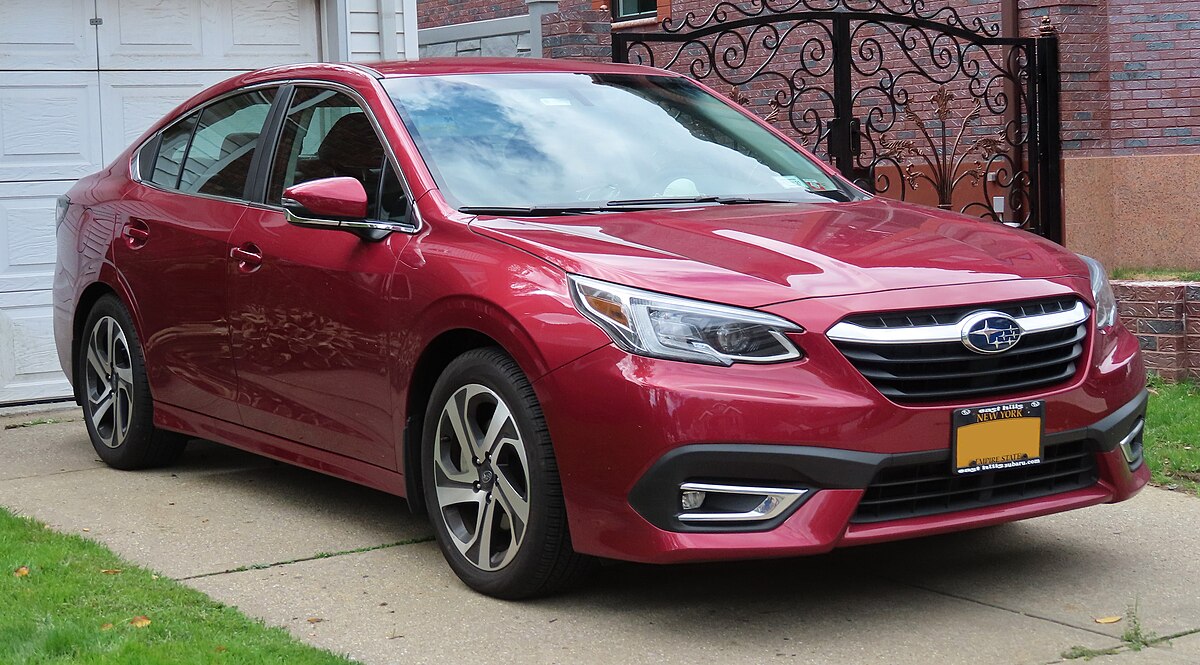
3. Subaru Legacy (2010–2014, 2.5i)
The 2010–2014 Subaru Legacy was supposed to be Subaru’s midsize sedan breakthrough—a vehicle that could compete with the Honda Accord and Toyota Camry while offering standard AWD. Unfortunately, the 2.5i variant of this Legacy was saddled with the same oil-thirsty engine that undermined its Forester and Outback cousins.
While the car excelled in snowy conditions and had a smooth ride, the engine’s appetite for oil was relentless. Many owners were blindsided by low oil levels between regular services, and some experienced engine knock or failure due to oil starvation.
The Legacy was further hampered by gasket leaks. The head gaskets, in particular, were a known weak point in Subaru’s older engines and continued to be an issue in this generation. Unlike in most inline engines, replacing head gaskets in a boxer engine is a labor-intensive task.
The engine must often be removed from the vehicle, resulting in high repair costs. Valve cover gasket leaks were also common, often causing oil to drip onto hot exhaust components, leading to burning smells and, occasionally, smoke under the hood. Owners described the experience as “driving a fog machine.”
Subaru’s handling of these problems left much to be desired. While the company acknowledged the problem through technical service bulletins and eventually extended warranties for select VINs, many affected customers were denied coverage or offered partial repairs that didn’t resolve the underlying issue.
It was a black eye for a model that, on paper, should have been one of the safest, most sensible AWD sedans available. Instead, the 2.5i Legacy left a legacy of frustration, lost confidence, and oil-stained driveways.
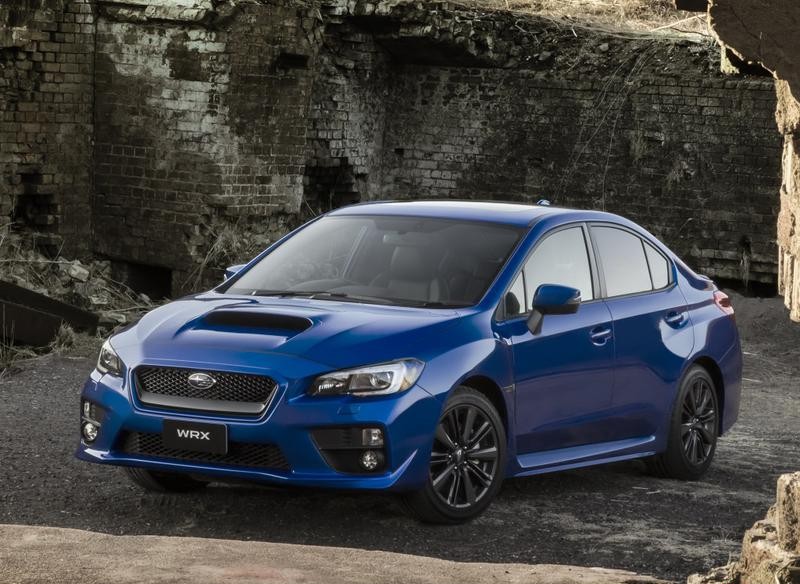
4. Subaru Impreza (2008–2011)
The 2008–2011 Subaru Impreza had the bones of a great compact car, but it was severely let down by engine troubles that defined an entire generation. Targeted at first-time buyers and young professionals, the Impreza was affordable, AWD-equipped, and decently stylish.
Unfortunately, the naturally aspirated EJ25 engine under its hood became known for excessive oil consumption and oil leaks. Just like in the Outback and Forester, defective piston rings led to burning oil in the combustion chamber, while leaky gaskets contributed to visible drips and a messier engine bay over time.
For a car positioned as a starter vehicle, the maintenance load was completely out of line with expectations. Many drivers didn’t discover the issue until the oil light came on—sometimes too late to prevent engine damage. Subaru’s failure to provide a consistent fix meant that each dealership handled the problem differently.
Some performed engine tear-downs or top-end rebuilds, while others simply advised owners to monitor and refill oil regularly. For new drivers or those unfamiliar with the importance of routine checks, the risk of catastrophic engine damage was very real.
These reliability issues undermined what was otherwise a well-rounded car. The Impreza offered a composed ride, decent handling, and excellent traction in snow. But it became hard to recommend once the oil issues surfaced. In hindsight, this generation of Impreza feels like a missed opportunity.
With a more robust engine design, it could have become the definitive AWD compact car of the era. Instead, it earned a reputation for being a car you had to “babysit”—frequently checking fluids and living with nagging leaks that never truly went away.
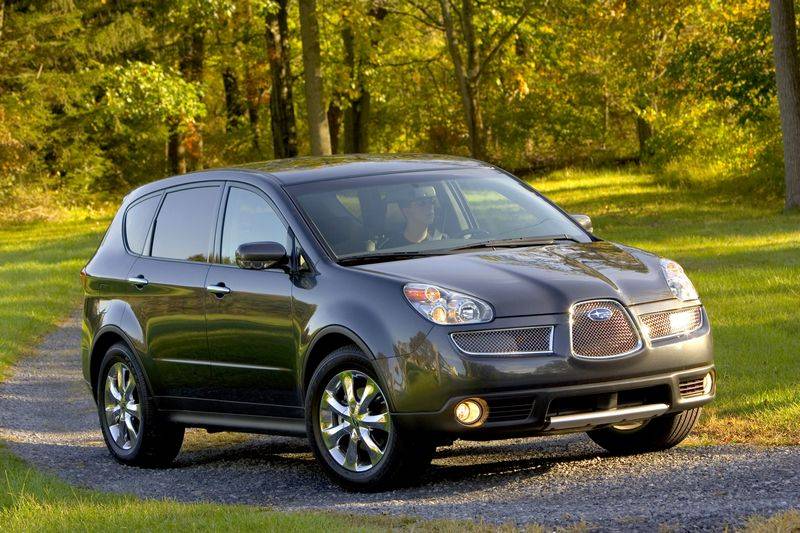
5. Subaru Tribeca (2006–2009)
The Subaru Tribeca was Subaru’s bold attempt at entering the midsize luxury crossover market—a segment dominated by the Toyota Highlander and Honda Pilot. On paper, the Tribeca had promise: a six-cylinder boxer engine, standard AWD, and a plush, well-equipped interior.
But the execution fell short, particularly under the hood. The 3.0-liter flat-six engine, while more powerful than the 2.5-liter four-cylinder, was prone to oil leaks from multiple points. Valve cover gaskets, oil cooler seals, and even timing chain covers were all frequent culprits, resulting in a vehicle that could leave puddles wherever it parked.
Repairing these issues was especially painful due to the compact engine bay and the engine’s horizontally opposed layout. Fixing even a modest gasket leak could involve removing significant components or even the entire engine. The cost of labor often made owners question whether to fix the issue or trade in the vehicle altogether.
Furthermore, the Tribeca’s heavier curb weight and more complex systems led to other reliability concerns, including suspension wear and transmission complaints that compounded the ownership headache.
These mechanical woes, combined with awkward styling and lackluster fuel economy, led to the Tribeca’s rapid fall from grace. Sales remained low, and Subaru ultimately discontinued the model in 2014. It’s now remembered less for its ambition and more for the oily mess it left behind—both literally and figuratively. For a vehicle meant to elevate Subaru into the premium crossover market, the Tribeca served more as a lesson in overreach and under-engineering.
Also Read: 5 Cars Where Minor Repairs Total Over $1,000 And 5 That Stay Manageable
Subaru’s story is one of both triumph and turbulence. On one hand, the brand has delivered some of the most dependable and rugged vehicles on the road—cars that thrive in harsh weather, on uneven terrain, and in the daily grind of family life or outdoor exploration.
These vehicles, like the Outback 3.6R, Forester 2.5i Premium, and Crosstrek, consistently earn praise for their practicality, comfort, and ability to rack up hundreds of thousands of miles with minimal mechanical drama. They are the vehicles that embody Subaru’s ethos: safe, capable, and quietly enduring.
Drivers who own one of the reliable Subarus often become brand loyalists for life. The confidence that comes from knowing your car can start in subzero temperatures, navigate snow-covered roads, or handle a gravel trail without hesitation is hard to overstate. Subaru didn’t just build transportation—it built trust.
And in vehicles like the Legacy 2.5i Limited or WRX STI, that trust is often rewarded. These models aren’t just machines; they become part of your lifestyle, whether that’s commuting through winter or exploring backcountry roads on the weekend. When a Subaru gets it right, it gets it very right.
But the brand’s missteps, particularly with oil consumption and leaking engines, can be equally long-lasting and memorable, for all the wrong reasons. The issues with certain 2.5-liter boxer engines, especially between 2008 and 2014, cast a long shadow.
Subarus that leak oil nonstop—like the 2010–2014 Outback 2.5i, the 2009–2013 Forester, and the 2008–2011 Impreza—are more than just mechanical nuisances. They’re reminders of how a single engineering flaw can erode consumer trust, cost thousands in repairs, and turn what should be a dependable car into a source of constant anxiety.
These oil-related problems weren’t merely quirks—they were widespread. Lawsuits, technical service bulletins, and customer complaints all painted the same picture: Subaru, for a time, dropped the ball. And while the company eventually made strides in correcting the design flaws in newer models, many drivers were left with a bad taste—and an oil-stained garage floor. It’s a lesson in the importance of quality control, transparency, and responsiveness in an industry where consumer loyalty must be earned, not assumed.
Still, it’s worth noting that Subaru didn’t stay stuck in that oily chapter forever. Newer engines, smarter engineering, and a more proactive approach to customer concerns have helped the brand regain much of the trust it lost.
Today, models like the Ascent, newer Forester, and updated Outback show that Subaru is still evolving and learning from past mistakes. For buyers willing to do their homework, there’s still plenty of value to be found in the Subaru lineup.
In the end, owning a Subaru is a bit like venturing into the wilderness: it offers freedom, adventure, and memorable experiences—but only if you choose the right path. Pick the right model and year, and you’ll have a vehicle that handles everything life throws your way. Pick the wrong one, and you might spend more time under the hood than behind the wheel. Know the difference, and Subaru can still be one of the best rides out there.

